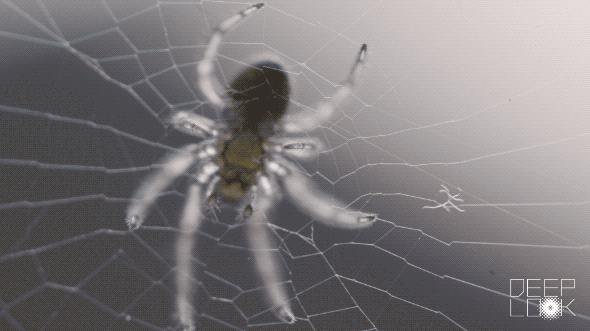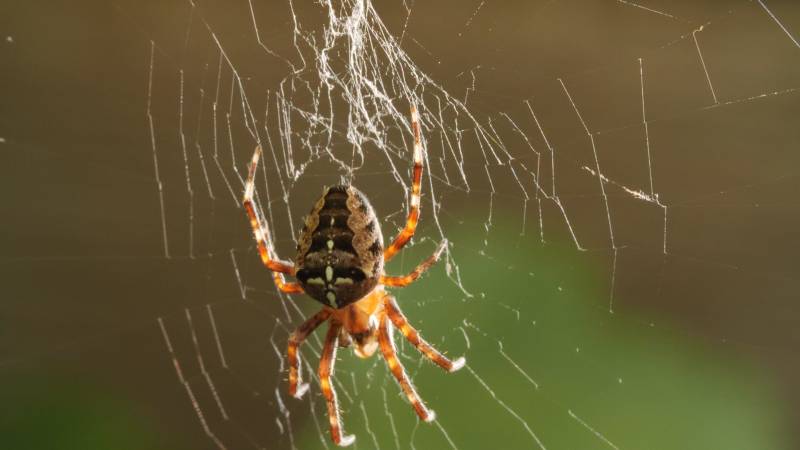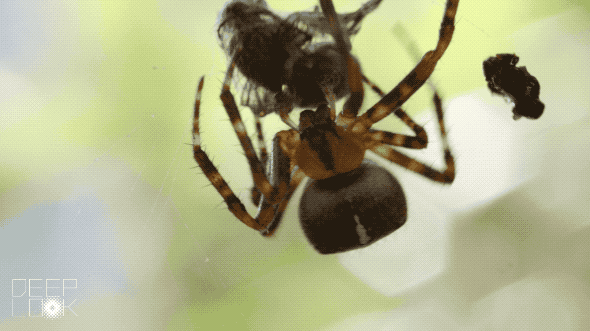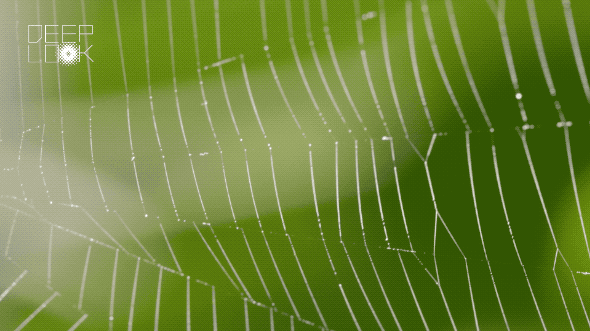Is a Spider's Web a Part of Its Mind?
Next time you see a big spider sitting in the middle of its web, before you scream, run away or squash it, maybe pause and consider for a moment all of the wondrous things it can do with that itsy-bitsy brain. Most spiders have a brain no larger than a poppy seed, but with this modest cerebral endowment, they not only construct intricate insect traps, they expertly expand their senses far beyond the limits of their bodies, using their webs as a physical extension of their perceptual abilities.
“Imagine if you were able to extend microphones out, radiating from your ears, extending the capability of your hearing,” said Francis Windram, a Ph.D. candidate and expert in spider foraging at Imperial College London.
The more than 48,000 spider species have done well for themselves, evolutionarily speaking. They create a wide variety of web styles, though some — like jumping spiders — don’t spin webs at all. There are over 4,000 different species of orb weaver spiders alone; these are the eight-legged spinners that create the famous spiral-shaped webs.

Anyone who’s watched orb weavers in action has seen them use their exquisite creations to deftly ensnare flying insects. Impressive as this, the webs function as much more than deadly traps.
Mostly nocturnal, orb weavers also happen to be almost completely blind. These species are only able to see light, dark and a little movement, but they are somehow able to quickly navigate their webs, pinpointing their unlucky victims and binding them in silk, a meal saved for later.
Webs play an integral role in everything an orb weaver does. Many species every day eat their silk, recycle it inside their body, and reconstruct the web overnight. When spiders are hungry, they can tighten the web’s strands and even adjust its size and shape, depending on what size of prey they’re in the mood for.
Knowing that beetles and moths use pheromones to communicate, UC Berkeley Ph.D. candidate Ashley Adams wondered whether spiders could use chemical cues to distinguish the webs of their own species from those of other types of spiders.
To make sure they weren’t just checking the web by feel, she soaked cotton threads in solutions made from extracts of webs spun by different species.
The male long-jawed orb weaver spiders in her lab consistently chose the threads treated with extracts from their own species, avoiding those doused with web extracts from other kinds of spiders, suggesting they do sense chemicals with their legs.

Adams’ soon-to-be-published study adds to the already impressive list of complex behaviors for these tiny-brained animals. We know that many mammals and birds seem to be able to construct a mental representation of space, but it’s rare for invertebrates (bees, octopuses and cuttlefish are exceptions). Orb weavers can do so much with their miniscule brains, some researchers ask the question: Is a spider’s web an extension of its mind?
Adams agrees that “at least from a neurological perspective, [the web] is this extremely effective extension of their senses that has helped them succeed in the environment and become so prevalent.”
But others, like biologist Hilton Japyassú of the Federal University of Bahia, Brazil, takes this idea a step further, suggesting that orb weavers use their webs as a form of extended cognition, outsourcing advanced mental tasks like problem-solving and memory. For example, once they have killed and wrapped their prey, a spider can store the prey for later, then easily find it again. The way they relocate the insects they have killed looks an awful lot like they are remembering, Japyassú says.
Recently, he and his colleagues set up an experiment in which they manipulated the web and removed prey the spider had wrapped up in silk to see how the spider reacted. By limiting the way the animals sensed the world around them, the scientists were able to directly test the “thinking web” idea. They found that when the webs were manipulated, the spiders changed their behavior. For one, they searched for the prey taken by the researchers. Also, if their webs were altered, or they encountered different-sized prey, they could adjust their foraging behavior by changing their capturing technique.
The researchers concluded that this two-way connection between the web and the spider’s behavior suggests that the web is indeed a way for the spider to process information, reserving precious brain power for other necessary and complex tasks like the actual capture of prey. For tasks that are more memory-intensive, like navigating or relocating prey, they don’t need to remember every single thread they have spun — just a few previous steps.

The idea of extended cognition — that tools like writing, computers, or phones are extensions of our thought processes — is not new to philosophers or scientists. But if you start defining cognition in the traditional sense, “there is no possibility to expand [it] to anywhere else outside of human experience,” Japyassú said. “I prefer to define it in a very simple way; that … cognition helps you to survive, and it’s related to information processing.” By this definition, the web is an extension of the spider’s thought processes.
Researchers don’t all fully agree that the webs actually are a part of a spider’s thinking. How do you tell that the spider has an actual plan, or if it is just exhibiting instinctual behavior when it builds its web? With current technology, we can’t see inside the tiny working brain of the orb weaver, so we are left with what behavioral observation can tell us.
Although some philosophers have a problem with the idea that an animal has a mind at all, Japyassú says scientists researching animal cognition “are more open-minded because they can observe such different ways of thinking in other animals.”
Spider researchers, said Japyassú, “see these spiders doing things that would seem impossible for a tiny animal.”
So, he says, the logical place to look for where all that thinking is happening is in the web.

